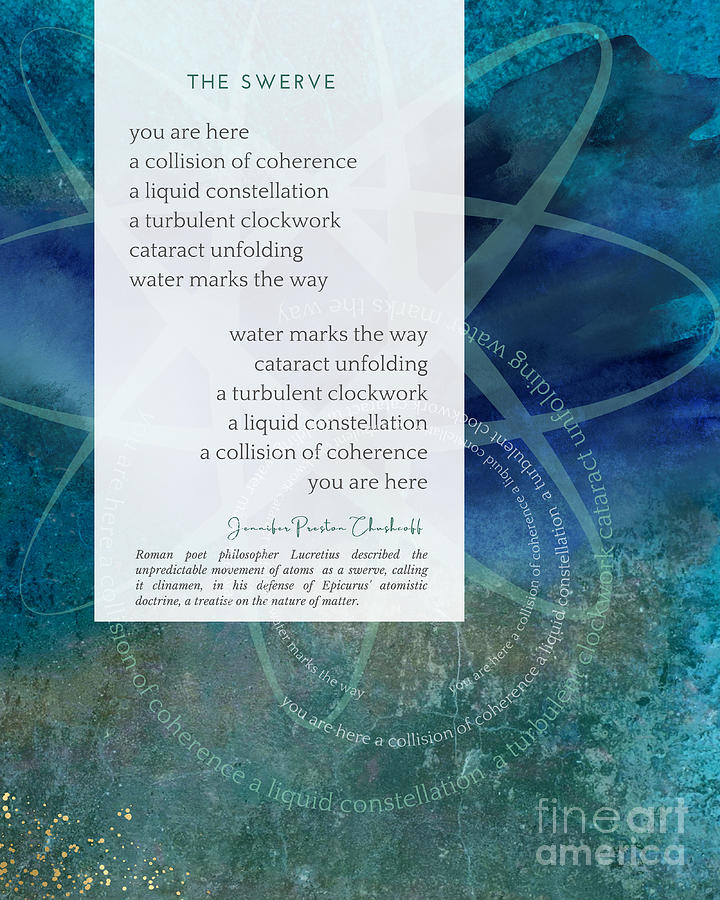

This is because the corporeal structure of water and the nature of air cannot put a check on each thing equally the heavier a thing is, the quicker they are mastered and have to give way. When things fall downwards through water or through thin air, they must indeed accelerate the speed of their fall in proportion to their weights. If by any chance anyone holds the view that heavier bodies, through being carried down more quickly in a straight line through the void, are able to fall from on top on lighter bodies and in this way produce impacts out of which the creative motion could arise, he is quite wrong and has strayed far from the path of true reason. For if they had not this characteristic of moving out of the direct line, they would all fall downwards like drops of rain through the depths of the void no collision would take place, no one atom would strike upon another and so nature would never have produced anything at all. While the atoms are being carried down in a straight line through the void by their own weight, at quite uncertain times and at uncertain intervals they swerve slightly out of their course - just enough for one to be able to say that there has been an alteration in their movement.


There is one other point on this subject which I want you to understand. 'The Atomic Swerve ' from 'De Rerum Natura' by Lucretius


 0 kommentar(er)
0 kommentar(er)
